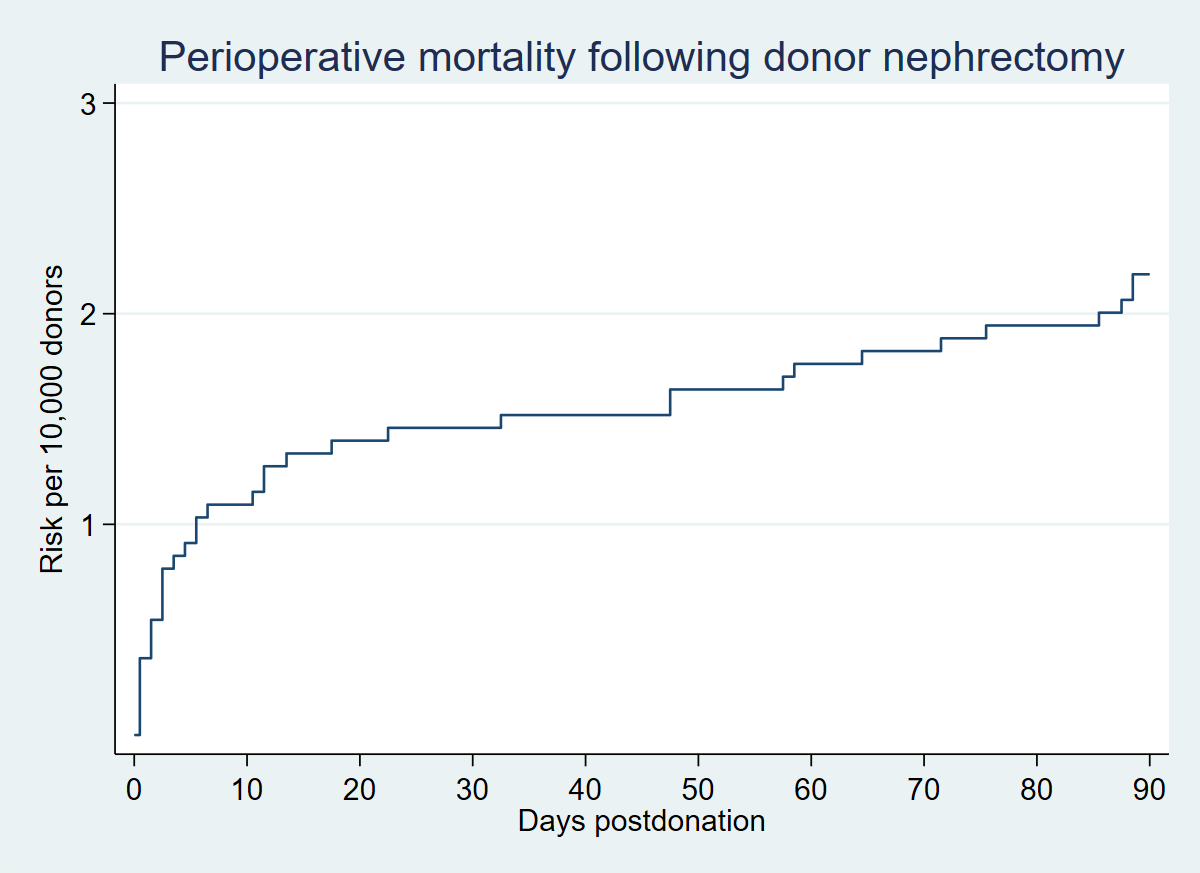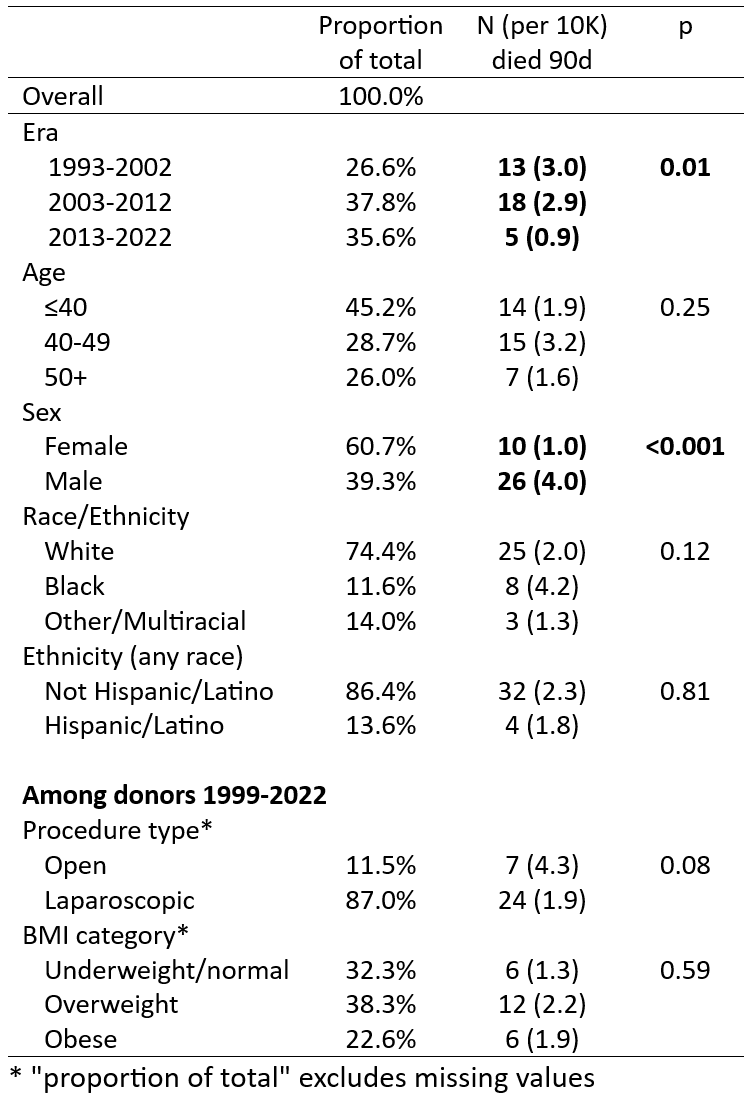
Substantial decline in perioperative mortality risk for living kidney donors
Allan B. Massie1, Jennifer D Motter1, Jon J Snyder2, Macey Levan1, Dorry L Segev1,2.
1Transplant Institute, New York University, New York, NY, United States; 2Scientific Registry of Transplant Recipients, Minneapolis, MN, United States
Living kidney donor (LKD) candidates must be accurately informed of the risks of perioperative mortality. The best current estimate, 3.1 deaths within 90d per 10,000 donations, comes from a study of donors from 1994-2009. Due to improvements in donor selection, surgical practice, and perioperative care, those estimates may not accurately represent current risk; a more recent evaluation is necessary.
Methods: Using United States national registry data (SRTR) on 164,564 LKDs 1993-2022, we calculated rates of mortality within 90 days of donation, stratified across three eras: 1993-2002, 2003-2012, and 2013-2022. Death events were captured from living donor follow-up reported by transplant programs as well as external sources. We compared risk across eras, and across subgroups of LKDs using Fisher exact tests. Subgroups by procedure type and BMI category were analyzed for LKDs 1999-2022 when these variables were reliably captured in the registry. Due to the small number of events, we did not conduct multivariable analyses.
Results: Overall risk of death within 90d postdonation was 2.2 per 10K cases; 50% of deaths occurred within the first 7d (Figure). Risk was comparable in 1993-2002 (3.0 per 10K) and 2003-2012 (2.9 per 10K), then dropped substantially in 2013-2022 (0.9 per 10K) (p=0.01).
Risk of death was consistent across subgroups of age, race, ethnicity (Table). Male LKDs were at higher risk than female LKDs (4.0 vs 1.0 per 10K, p<0.001). Among LKDs 1999-2022, risk was higher for LKDs who had open (vs laparoscopic) procedures, although not statistically significant (4.3 per 10K vs 1.9 per 10K, p=0.08). Risk was consistent across categories of BMI (p=0.59). In the most recent era, risk continued to be higher for male LKDs (4/21352, 1.9 per 10K) than for females (1/37304, 0.3 per 10K) although not statistically significant (p=0.06).
Conclusions: Overall of perioperative mortality declined substantially in the past decade compared to prior decades, to fewer than 1 event per 10,000 donations. Risk likely remains higher for male donors, but even for this group has fallen substantially. Counseling for LKD candidates needs to be updated.


NIDDK (R01DK132395).
